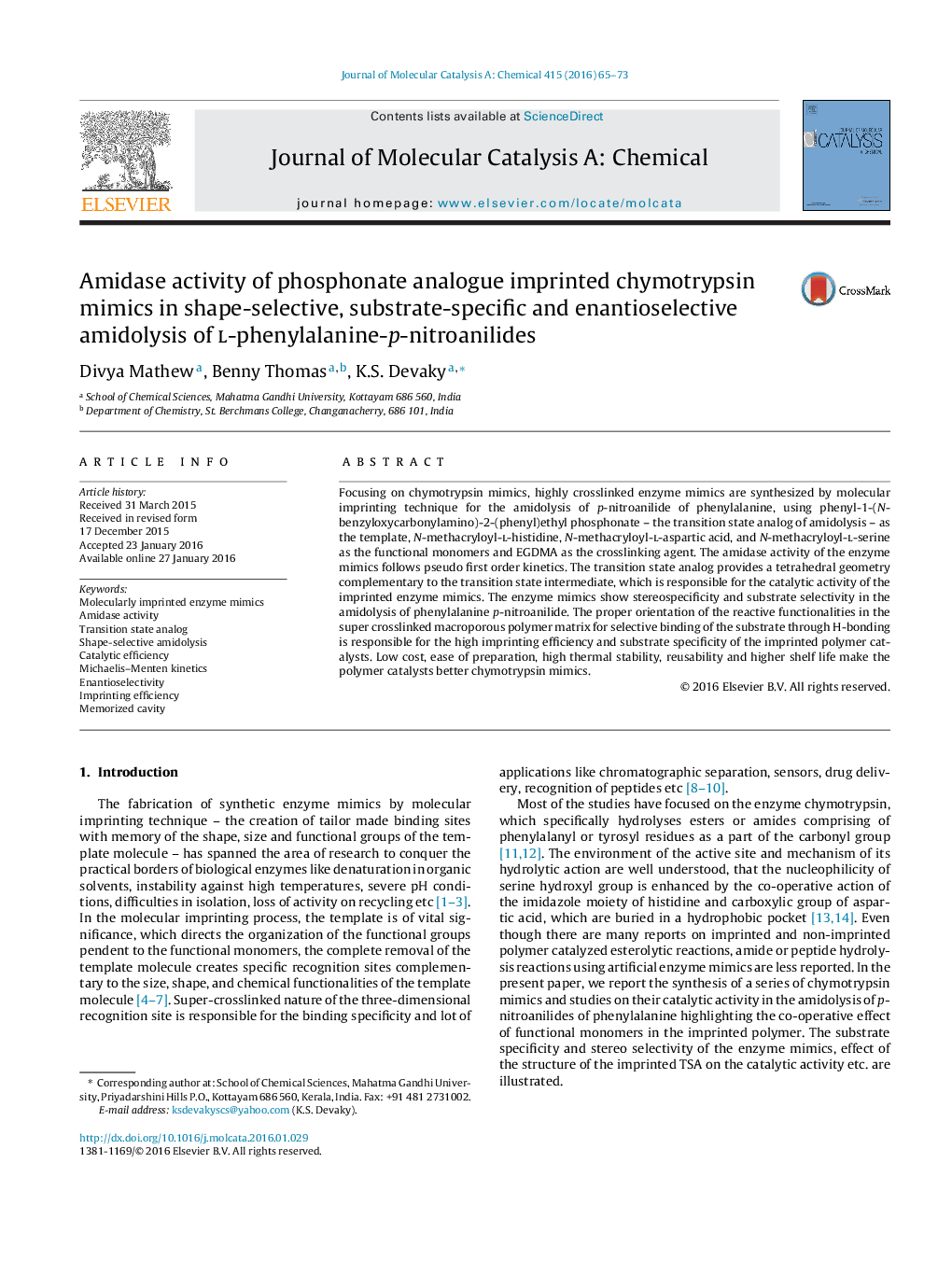| Article ID | Journal | Published Year | Pages | File Type |
|---|---|---|---|---|
| 64689 | Journal of Molecular Catalysis A: Chemical | 2016 | 9 Pages |
•Describes the catalytic amidolysis of p-nitroanilides using TSA imprinted polymers.•Trifunctional enzyme mimic shows co-operative catalysis due to effective H-bonding.•TSA that resembles more the substrate in structure imparts better specificity to the imprinted enzyme mimics.•The functional monomers of l-amino acids predominantly interact with L-TSA leading to enantioselectivity.•Imidazole moiety of histidine is the key functional group and only the enzyme mimics containing imidazole units obey Michaelis–Menten kinetics.
Focusing on chymotrypsin mimics, highly crosslinked enzyme mimics are synthesized by molecular imprinting technique for the amidolysis of p-nitroanilide of phenylalanine, using phenyl-1-(N-benzyloxycarbonylamino)-2-(phenyl)ethyl phosphonate – the transition state analog of amidolysis – as the template, N-methacryloyl-l-histidine, N-methacryloyl-l-aspartic acid, and N-methacryloyl-l-serine as the functional monomers and EGDMA as the crosslinking agent. The amidase activity of the enzyme mimics follows pseudo first order kinetics. The transition state analog provides a tetrahedral geometry complementary to the transition state intermediate, which is responsible for the catalytic activity of the imprinted enzyme mimics. The enzyme mimics show stereospecificity and substrate selectivity in the amidolysis of phenylalanine p-nitroanilide. The proper orientation of the reactive functionalities in the super crosslinked macroporous polymer matrix for selective binding of the substrate through H-bonding is responsible for the high imprinting efficiency and substrate specificity of the imprinted polymer catalysts. Low cost, ease of preparation, high thermal stability, reusability and higher shelf life make the polymer catalysts better chymotrypsin mimics.
Graphical abstractHighly crosslinked chymotrypsin mimics are synthesized by molecular imprinting technique for the amidolysis of p-nitroanilide of phenylalanine, using phenyl-1-(N-benzyloxycarbonylamino)-2-(phenyl)ethyl phosphonate – the transition state analog of amidolysis – as the template, N-methacryloyl-l-histidine, N-methacryloyl-l-aspartic acid, and N-methacryloyl-l-serine as the functional monomers and EGDMA as the crosslinking agent. The amidase activity of the enzyme mimics follows pseudo first order kinetics. The transition state analog provides a tetrahedral geometry complementary to the transition state intermediate, which is responsible for the catalytic activity of the imprinted enzyme mimics. The enzyme mimics show stereospecificity and substrate selectivity in the amidolysis of phenylalanine p-nitroanilide.Figure optionsDownload full-size imageDownload high-quality image (103 K)Download as PowerPoint slide
